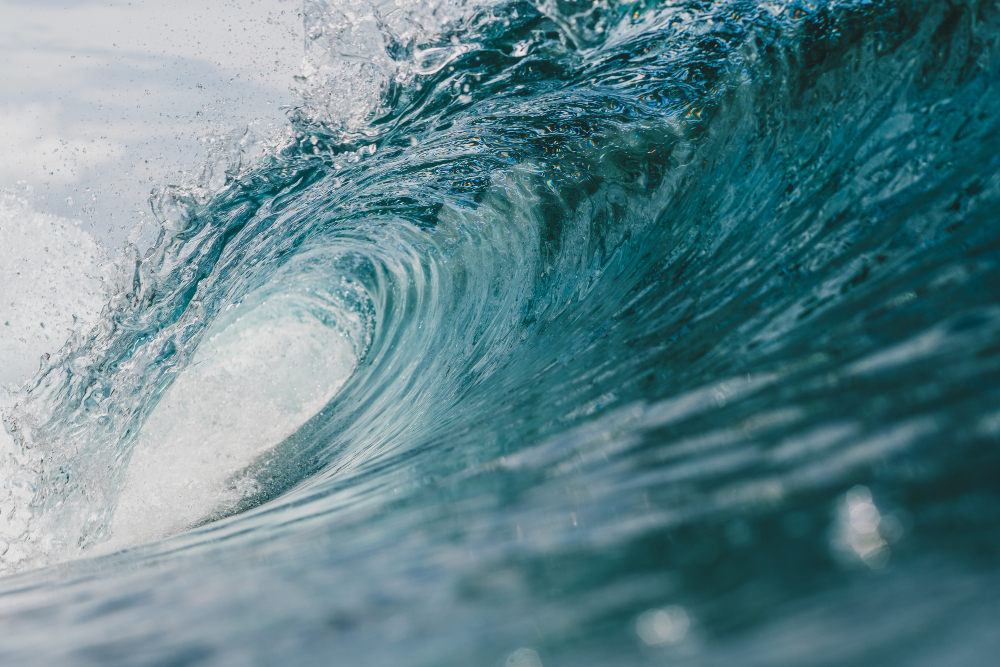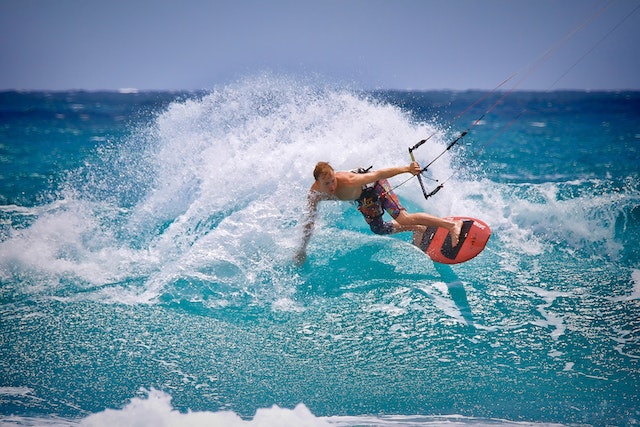Surfing, a thrilling water sport that allows individuals to ride the waves, has a long and fascinating history. Central to this exhilarating sport is the surfboard, a key tool that has seen remarkable evolution over the years. From the classic wooden planks to the sleek modern designs, surfboards have undergone transformative changes, enhancing the surfing experience. In this article, we will take a delightful journey through time, exploring the captivating progression of surfboard designs from the past to the present.
Table of Contents
| Sr# | Headings |
|---|---|
| 1 | Introduction |
| 2 | The Birth of Surfing |
| 3 | Classic Wooden Planks: The Early Surfboards |
| 4 | Innovations in Design: The Malibu Era |
| 5 | The Shortboard Revolution |
| 6 | The Thrilling Advent of Thrusters |
| 7 | High-Performance Thrusters: Fins and Channels |
| 8 | The Fun and Versatile Fish Boards |
| 9 | Toward Hydrodynamic Perfection |
| 10 | The Rise of Epoxy and Foam Boards |
| 11 | Modern Longboards: A Timeless Classic |
| 12 | The Influence of Computer-Aided Design |
| 13 | Eco-Friendly and Sustainable Surfboards |
| 14 | Surfboard Materials: From Foam to Carbon Fiber |
| 15 | Future Trends: The Surfboards of Tomorrow |
1. Introduction
Surfing has always fascinated adventurers and water enthusiasts alike. Riding the waves, feeling the rush of the ocean, and being one with nature’s force – it’s an experience like no other. But at the heart of this exhilarating activity lies a crucial element that has seen significant evolution over time: the surfboard.
2. The Birth of Surfing
To truly understand the evolution of surfboard designs, we must go back to the roots of surfing itself. The art of wave riding can be traced back to ancient Polynesian cultures, where wooden boards were used for both transportation and recreation. These ancient surfboards were long and heavy, crafted from local woods like koa and alaia.
3. Classic Wooden Planks: The Early Surfboards
The arrival of surfing in Hawaii brought about a unique craftsmanship in surfboard design. The Hawaiians honed their skills, shaping solid wood into large, finless boards. These classic surfboards were challenging to maneuver but paved the way for modern designs.
4. Innovations in Design: The Malibu Era
The 1950s witnessed a turning point in surfboard design, thanks to influential figures like Bob Simmons. Foam and fiberglass made their debut, replacing wood and revolutionizing surfboard shapes. The Malibu era saw lighter, more maneuverable boards, setting the stage for what was to come.
5. The Shortboard Revolution
In the 1960s, the surfboard underwent a radical transformation. Shortboards, characterized by their reduced length, allowed surfers to perform more aggressive maneuvers and ride critical sections of the wave. The shortboard revolution changed the face of surfing forever.
6. The Thrilling Advent of Thrusters
As the sport progressed, so did surfboard technology. In the 1980s, Simon Anderson introduced the thruster setup – a tri-fin configuration that provided unparalleled control and speed. This innovation further pushed the boundaries of surfing performance.
7. High-Performance Thrusters: Fins and Channels
Continuing the pursuit of performance, shapers experimented with different fin setups and bottom contours. Thrusters with various fin types and channels emerged, fine-tuning the surfboard’s hydrodynamics and unlocking new possibilities on the waves.
8. The Fun and Versatile Fish Boards
In the 1970s, a counter-culture movement brought about the fish surfboard – shorter, wider boards with a swallowtail design. Fish boards offered a new kind of fun, excelling in smaller waves and encouraging creative surfing styles.
9. Toward Hydrodynamic Perfection
With advancements in materials and manufacturing, surfboard designs became more refined. Hydrodynamic shapes and precision foiling allowed surfers to maximize speed and performance, elevating the surfing experience to new heights.
10. The Rise of Epoxy and Foam Boards
Epoxy and foam boards made a splash in the industry, offering durability, buoyancy, and versatility. These materials allowed shapers to experiment further, leading to the development of various board types for different surfing conditions.
11. Modern Longboards: A Timeless Classic
While shortboards dominate the modern surfing scene, longboards have retained their allure. Classic in design and elegant in style, longboards offer a smooth and soulful surfing experience, attracting both beginners and seasoned surfers.
12. The Influence of Computer-Aided Design
In recent years, computer-aided design (CAD) has revolutionized surfboard shaping. With precise measurements and simulations, shapers can create customized boards tailored to a surfer’s specific style and preferences.
13. Eco-Friendly and Sustainable Surfboards
As environmental awareness grows, so does the demand for eco-friendly surfboards. Manufacturers are embracing sustainable materials and production methods, ensuring that surfboards leave a minimal ecological footprint.
14. Surfboard Materials: From Foam to Carbon Fiber
From foam and fiberglass to carbon fiber and beyond, surfboard materials have evolved significantly. Each material offers unique properties, influencing the board’s performance, weight, and overall feel.
15. Future Trends: The Surfboards of Tomorrow
The future of surfboard design looks promising. Innovations like AI-driven shapes, recyclable materials, and groundbreaking manufacturing techniques are poised to shape the surfboards of tomorrow, taking surfing to unprecedented heights.
Conclusion
The evolution of surfboard designs is a testament to human ingenuity and the relentless pursuit of excellence in surfing. From the ancient wooden planks to the technologically advanced masterpieces of today, surfboards have transformed alongside the sport, enhancing the surfing experience for all.
FAQs
1. What were the first surfboards made of?
The first surfboards were made of solid wood, such as koa and alaia, crafted by ancient Polynesian cultures.
2. Who introduced the thruster setup in surfboards?
The thruster setup was introduced by Australian surfer Simon Anderson in the 1980s, revolutionizing surfboard performance.
3. What are fish surfboards known for?
Fish surfboards are known for their shorter, wider design with a swallowtail shape, providing a fun and versatile surfing experience.
4. How has computer-aided design influenced surfboard shaping?
Computer-aided design (CAD) has allowed for precise measurements and simulations, enabling shapers to create customized surfboards for individual surfers.
5. What is the future of surfboard design?
The future of surfboard design holds exciting possibilities, including AI-driven shapes, sustainable materials, and innovative manufacturing techniques, pushing the boundaries of surfing further.


